Mark Sisson's Blog, page 270
February 19, 2015
6 Foreign Health Concepts from Around the Globe
 Maybe it was running across the word Kummerspeck (literally translated from German as “grief bacon,” meaning weight put on through emotional eating). A strange term if there ever was one… The fact is, I’ve always been fascinated by how languages can reflect particular feelings or phenomena most of us would never think to put a word to. When it comes to the language of health and well-being, I think certain terms have the unique power to literally shift our perception. They make us think differently about the choices in front of us and the ways we interact with the the world. What health concepts can we learn from other cultures? How might they change our understanding of the choices we make every day – or how we view our options for living in general? Perhaps you have your own foreign terms that come to mind. I think these six concepts offer some intriguing food for thought.
Maybe it was running across the word Kummerspeck (literally translated from German as “grief bacon,” meaning weight put on through emotional eating). A strange term if there ever was one… The fact is, I’ve always been fascinated by how languages can reflect particular feelings or phenomena most of us would never think to put a word to. When it comes to the language of health and well-being, I think certain terms have the unique power to literally shift our perception. They make us think differently about the choices in front of us and the ways we interact with the the world. What health concepts can we learn from other cultures? How might they change our understanding of the choices we make every day – or how we view our options for living in general? Perhaps you have your own foreign terms that come to mind. I think these six concepts offer some intriguing food for thought.
Waldeinsamkeit
This German word (a mouthful, right?) means woodland solitude. As a combination of Wald (forest) and Einsamkeit (solitude or loneliness), the term evokes the quiet and seclusion we can feel in the wilderness. With so many of us living in crowded cities or suburbs these days, the feeling of Waldeinsamkeit can almost be a nostalgic experience.
When was the last time you were alone in the forest – secluded with nothing but the sound of the wind through the trees and bird calls from various corners of the wood? It’s a rarer instance these days, and I think that fact suggests there’s something endangered about this aspect of the human spirit. The statement might sound draconian, but perhaps Waldeinsamkeit as a concept underscores a certain core experience to primal humanity, an experience that fewer of us have these days and most of us have less often. Who’s up for changing this?
Shinrin-yoku
While we’re on the subject of forests, here’s a tangible reason to get lost in the woods this weekend. Translated as “forest bathing,” shinrin-yoku is a growing trend and research-backed medical practice in Japan. The Japanese government has even partnered with the medical community to offer free check-ups in park areas and to designate official “forest therapy” sites.
Research on the effects of shinrin-yoku has demonstrated the power of a 3-day trip to the forest to decrease blood pressure, pulse rate, and cortisol levels. But the real kicker is the impact on the body’s NK (natural killer) cells, lymphocytes that fight off infection and cancer growth as well as anti-cancer protein expression. The benefits, studies show, can last up to a month!
As the Primal logic suggests, activities that mirror the best of our evolutionary upbringing will prompt the best hormonal and cellular responses, which then support the best mental and physical outcomes. When you have the chance to get to the wilderness, for the love of Grok go! If you don’t have the chance, create the opportunity for yourself as soon as you can.
Friluftsliv
Try saying that five times as fast as you can…. Translated literally as “free air life,” it encompasses the emotional and spiritual well-being to be had by being/living outside. However we choose to spend our time outside (e.g nature photography, hiking, trail running, Tai Chi in the park, picnicking, bike riding, Ultimate Frisbee or even napping), there’s something to the outdoor experience that’s unique and works on our mental mood.
As I’ve mentioned here before, time outdoors works on our emotional, hormonal and overall physiological responses as well. Exercising outdoors, for one, has been shown to offer better stress relief than working out indoors.
Koyaanisqatsi
A Native American term from the Hopi culture, koyaanisqatsi means “crazy life” or even life out of balance. The larger sense behind the word suggests a way of life that is falling apart, a state of affairs that calls for another way of being.
We might be tempted to see the concept in our personal lives, and I can certainly see the applicability there. When we find ourselves overrun with insane commutes and overwhelming commitments, we eventually hit a point of critical mass. When we live in tune with our physical bodies, we realize we’re being called to find a new way of life, a better life balance.
Truer to the original intent, koyaanisqatsi refers to larger cultural conditions that can make life unsustainable – at both a sociological and ecological level. It’s not hard to see the applicability of this term to much of modern times. For all the benefits, much of modern life confounds our primal psychologies, not to mention the natural order of ecological balance. I think Primal can have something to do with that new way of living in response….
Uitwaaien
After getting into the walking series a couple of months ago, I was taken in by this Dutch term, which means to take a break to walk outside and clear one’s head.
Clearly, this concept hits on the need for outdoor time, but it also suggests something essential to the primal picture. Modern life drains us with such emphasis on directed attention. The result? We get emotionally irritable and mentally fatigued. The opposite of this is involuntary attention, the kind of unfocused but attentive presence that would characterize Grok’s scanning of the horizon. Yet, this kind of attention plays such a small role in our day. We, being creatures of free will, have a choice.
Instead of hopping online at night or doing a crossword, we can give ourselves time to not think (an earth-shattering concept, no?). How about watching the dog play like a fool in the yard or going for a walk where we don’t have to watch for traffic? Daydreaming, anyone? Even mindless chores or creative hobbies that get us into a flow can offer enough cognitive variety to ease our weary modern brains.
Arbejdsglæde
This Danish word translates as “work happiness” or the satisfaction we feel with fulfilling work. How many of us have felt this? When was the last time we did? Although we may situate our vocational vision outside of the work that pays the bills, do we experience this kind of joy in our professional, volunteer or hobby endeavors?
In a culture that can perseverate on money, prestige, and comparison, Arbejdsglæde is one more reminder that vocational fulfillment is a means of genuine happiness – and inclusive well-being.
Thanks for reading, everyone. Which of the above grab your interest, and how do they speak to you? Do you have health concepts from around the globe to add to the list? Enjoy the end of your week.



February 18, 2015
Primal Kitchen Mayo Is Now Available (PLUS a Chance to Win!)
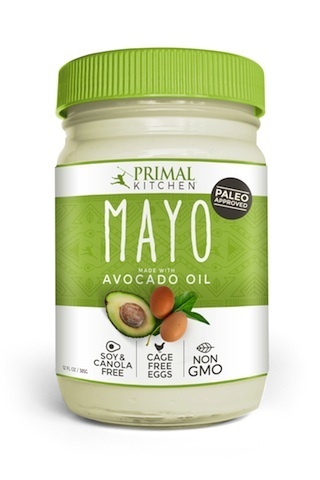 It’s finally here. The thick, creamy deliciousness you’ve been craving. Whipped up into a rich, velvety sauce that will transform your fish, meat, and vegetable dishes into MasterChef-worthy masterpieces. Primal Kitchen™ Mayo is packaged fresh and cuisine ready, and to celebrate this major evolution in the ancestral health community we’re holding a sweepstakes! All you have to do is enter with the click of a mouse at this link. Register to win a $500 gift certificate to Thrive Market and 1 of 20 free annual memberships to Thrive Market (a $60 value)! (Details to follow.)
It’s finally here. The thick, creamy deliciousness you’ve been craving. Whipped up into a rich, velvety sauce that will transform your fish, meat, and vegetable dishes into MasterChef-worthy masterpieces. Primal Kitchen™ Mayo is packaged fresh and cuisine ready, and to celebrate this major evolution in the ancestral health community we’re holding a sweepstakes! All you have to do is enter with the click of a mouse at this link. Register to win a $500 gift certificate to Thrive Market and 1 of 20 free annual memberships to Thrive Market (a $60 value)! (Details to follow.)
Why all the buzz about Primal Kitchen Mayo? For starters, no more slaving away in the kitchen making labor-intensive homemade mayonnaise that’s likely to spoil in just a few short days. And no more slopping on runny unyoked “mayo” spreads made up of coconut and olive oils. Coconut oil is far too saturated and solid to mask as a mayo spread (not to mention, much too coconutty to impart that classic mayo taste), and olive oil is so distinct in flavor that it takes over the taste of the food it’s supposed to be complementing. Commercially available mayos use soybean oil as their base (ick!), but Primal Kitchen Mayo uses avocado oil to infuse its mayonnaise with a neutral flavor and thick creamy texture that doesn’t spoil before the expiration date or break apart into an oily mess.
Primal Kitchen’s pure avocado oil has all the health benefits we’ve come to depend on in an avocado:
Subdues the inflammatory response
Protects the liver
Improves cardiometabolic dysfunction
Boosts nutrient absorption
Resists heat and remains stable
Primal Mayo is made with just 5 real-food ingredients: pure avocado oil, organic eggs, organic vinegar, sea salt and rosemary extract. And you don’t have to worry about canola or other industrial seed oils sneaking onto the ingredient list. That’s some clean, primal-friendly eating there, folks!
So, try a jar of Primal Kitchen Mayo today. Primal Kitchen Mayo is sold by-the-jar only at Thrive Market. If your taste buds give it the thumbs up, then shop for three-packs at the Primal Blueprint shop. Free shipping options are available on both sites. Hurry and get a jar before they sell out. Limited quantities available!
Thrive Market/Primal Kitchen Mayo Sweepstakes
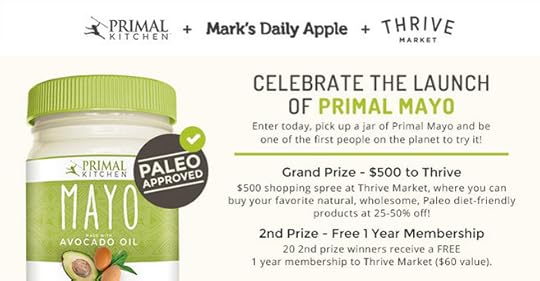
Enter to win a $500 gift certificate to Thrive Market and 1 of 20 free annual memberships. You have through next Wednesday (Feb. 25) to register with Thrive Market via this link before this exclusive offer ends.
Why do you want to Thrive? Thrive Market makes access to healthy, high-quality foods easier and more affordable. It’s an online health food co-op (think: Whole Foods offerings at Costco prices) with 25-50% discounts on over 4,000 products from 500 top brands…and that number is constantly growing. You can shop Paleo/Primal-prepared foods and supplements, and home, personal care, beauty, and baby products. Thrive does all the investigative work for you, with over 90 “tags” (including “Paleo”) that let you filter through the options according to your cravings. For instance, you can search for certified-organic, peanut-free, primal-friendly, and even fair-trade products with no hassle or guesswork.
What I particularly love about this membership-based online market—aside from the paleo, gluten-free products it offers—is its socially conscious mission. In Thrive’s own words:
Thrive Market is a revolutionary e-commerce site offering the best 4,000 healthy living products at 25-50% off retail prices (shipped to your door for free). Through a $59.95 annual membership, members get access to the top 500 natural brands. For every paid member, Thrive Market gives away a free membership to a low-income family so we can all thrive together.
And Thrive is an environmentally sustainable business that uses recycled packaging and paper, works with eco-friendly vendors and suppliers, and boasts a zero carbon footprint.
So register for free with Thrive today, pick up a jar of Primal Mayo and be one of the first people on the planet to try it. And keep an eye on your inbox. We’ll be contacting you if you’re one of the lucky winners.
Let me know what you think, and be sure to keep up with Primal Kitchen on Facebook and Instagram.
Prefer listening to reading? Get an audio recording of this blog post, and subscribe to the Primal Blueprint Podcast on iTunes for instant access to all past, present and future episodes here.


February 17, 2015
Why Is Regaining Weight So Common?
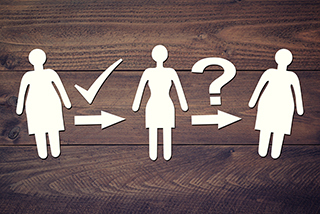 It’s an age-old story. A person has a huge amount of weight to lose and gets rid of most of it through a combination of diet, exercise, and lifestyle modification. And they feel fantastic. They’ve got energy for days, their skin glows, they exude newfound confidence, and they experience other small miracles. Many of you have lived this. But then something happens: the weight loss stops, or, worse, it reverses. They can keep the weight at bay as long as their diet is ironclad and they don’t skip any workouts, but as soon as they slip up even a little bit, they gain weight. And when they gain, they seem to gain it faster and more easily than should be normal. It just doesn’t seem fair.
It’s an age-old story. A person has a huge amount of weight to lose and gets rid of most of it through a combination of diet, exercise, and lifestyle modification. And they feel fantastic. They’ve got energy for days, their skin glows, they exude newfound confidence, and they experience other small miracles. Many of you have lived this. But then something happens: the weight loss stops, or, worse, it reverses. They can keep the weight at bay as long as their diet is ironclad and they don’t skip any workouts, but as soon as they slip up even a little bit, they gain weight. And when they gain, they seem to gain it faster and more easily than should be normal. It just doesn’t seem fair.
What’s going on here?
It comes down to how we gain and lose weight.
See, there are two kinds of fat gain: hypertrophic and hyperplastic. Adipose tissue hypertrophy is when your existing fat cells get bigger. Adipose tissue hyperplasia is when entirely new fat cells are created.
The vast majority of fat cells are created and established during childhood and adolescence. During early infancy and from ages 9 to 13 appear to be especially crucial stages for adipose hyperplasia (PDF). After adolescence, you’re pretty much stuck with the number of fat cells your body has made. There are some regional differences in how adults gain body fat, with overfeeding creating new fat cells in the lower body fat but not upper body fat, but for the most part, the number of fat cells a person has is fixed during adolescence and only increases in adults with obesity. If your existing fat cells are filled to the brim and there’s nowhere else to put the incoming energy, the body will make new ones.
In fact, adult adipose hyperplasia is a safety feature. As much as we hate the idea of adding entirely new fat cells to our body, they’re storage depots for excess energy. If you don’t have the extra fat cells for spillover, you’ll start depositing fat in the liver and around the other organs — basically, anyplace that’ll take it. This can have disastrous effects on our health. Animal studies show that inducing adipose tissue hyperplasia in energy excess alleviates the symptoms of type 2 diabetes in obese mice, while hypertrophic obesity (bigger fat cells) is associated with type 2 diabetes. In that respect, hyperplastia delays the development of fatty liver, diabetes, and other diseases of severely excessive nutrient accumulation by providing a place to put the nutrients.
Weight loss doesn’t remove these fat cells, though. It pulls fat from existing ones, leaving the (mostly) empty cells behind. A formerly obese person who’s dieted and exercised down to 15% body fat still has the same number of fat cells he did when he was at 35% body fat. The fat is just spread more thinly, which makes avoiding weight regain more difficult. Why?
It has to do with leptin.
People tend to say that leptin reflects fat mass. That’s true, but it’s not the complete story. Leptin levels reflect fat mass and the size of each fat cell. That means that total adipose tissue (body fat across the body) and the size of the individual fat cells affect the secretion of leptin, with small fat cells (of which the formerly obese have an abundance) secreting about 1/7 as much leptin as a larger fat cell. If you’re walking around with a ton of tiny, mostly empty fat cells after weight loss, you will secrete far less leptin than a perpetually lean person sitting at the same body fat percentage. This has several effects that predispose the formerly obese to weight regain:
Your energy expenditure will drop. Leptin regulates how much energy you burn (and how much spontaneous physical activity you engage in). If leptin levels are low, you’re not going to want to move or exercise as you otherwise would, and you will burn less energy doing it.
Your appetite will increase. In a perpetually lean person whose fat cells are larger and less numerous, adequate leptin maintains proper appetite homeostasis. If the leptin receptors in your hypothalamus aren’t getting much action, though, the brain assumes you’re starving and need more food. The effects of postprandial satiety hormones are inhibited (so you get hungrier faster after meals) and appetite signaling is upregulated (so you get really hungry). The drive to regain the lost weight is increased.
Your peripheral tissues will become primed to store, rather than burn nutrients. Your small fat cells have a kind of “fat memory.” Once established, a fat cell is more likely to regain the lost weight in the presence of excess energy (which, as you remember, your low leptin levels are prompting you to consume).
This makes things harder for the formerly overweight or obese. Even if they’ve lost a hundred pounds and gotten down to ideal body fat percentages, they still have all these fat cells that want to gain weight, make you hungry, and stop you from expending too much energy.
Are there any methods for culling “extra” fat cells? There are methods that work but are probably unfeasible or have undesirable side effects:
Adipotide is an experimental weight loss drug that kills fat cells by cutting off their blood supply. This causes rapid weight loss in monkeys, and human trials are underway. A few human guinea pigs have already got their hands on the stuff, of course, but their preliminary results don’t look too promising unless you like kidney damage, hypoglycemia, cloudy urine, iffy bladder control, strange bumps at the injection site, and constant pain. I’d take a real long wait and see on adipotide.
Leptin can program cell death in fat cells. Of course, since mostly-empty fat cells secrete very little leptin, the formerly obese shouldn’t count on their adipose tissue providing enough leptin to off itself. Leptin therapy works well for killing fat cells, but it’s really expensive (like, $600k per year expensive).
High-dose conjugated linoleic acid supplementation can induce fat cell apoptosis in overweight mice, but it also causes lipodystrophic diabetes, insulin resistance, hyperinsulinemia, and liver swelling. These aren’t side effects of fat cell deletion. They’re features. Better to get your CLA through grass-fed meat and dairy.
There are a number of plant compounds that work in animals or petri dishes, like green tea extracts and resveratrol. Will sipping matcha green tea and Chilean malbec destroy your fat cells? Probably not, but it can’t hurt to try and they can certainly be healthy additions to a diet in their own rights.
Liposuction removes fat cells from desired regions, though the feasibility of long-term maintenance of these losses isn’t clear. Animal studies indicate that surgical removal of fat cells redirects subsequent fat gain to different parts of the body. In a recent human trial, liposuction subjects regained their lost weight within a year, all of it going to the belly and visceral stores.
There is one method that works in animals and live humans, but it doesn’t actually kill fat cells. It converts them into a more useful type of fat:
Cold exposure. It turns out that cold exposure has the potential to transform white adipose tissue cells into metabolism-stimulating brown fat cells. In one recent study, researchers took belly fat samples from the same people during the summer and winter. Biomarkers of brown adipose tissue activity were higher in the winter belly fat. In another portion of the study, people held ice packs against their thighs. Thigh tissue samples revealed greater conversion of white fat into brown fat in the lean members of the group, while the obese had less brown fat conversion, probably due to higher baseline inflammation levels. A more recent study found that cold applied to human neck fat initiated the conversion of white fat cells into brown ones. If you can’t kill ‘em, convert ‘em.
One problem with this: it’s not a one-and-done deal. Cold-converted brown fat can revert back to white fat if the stimulus is withdrawn, though not immediately. Periodic cold exposure, even if it’s just taking early morning walks in short sleeves or cool showers or regular dips in cold water several times a week, might be required for people trying to maintain the browning.
There are no easy answers, unfortunately. It’s a simple fact that the formerly-obese have to work harder, exert more willpower, and be more fastidious with their diets to avoid weight regain. But it can be done, and until we have safe, effective, and long-lasting methods for removing or prompting the clean death of unwanted fat cells, or until leptin therapy becomes cost effective, I expect those of you who have lost weight and want to avoid regaining it will have your work cut out for you.
Just remember: you have a home here and a supportive community ready to help and provide support, camaraderie, and empathy. You have a solid framework — or a blueprint, if you will — for maintaining healthy eating, moving, and living habits.
Thanks for reading, everyone. I’d love to hear your thoughts, questions, and concerns in the comment section below.
Prefer listening to reading? Get an audio recording of this blog post, and subscribe to the Primal Blueprint Podcast on iTunes for instant access to all past, present and future episodes here.



February 16, 2015
Dear Mark: Low Carb Powerlifting, Why We Store Fat, Houseplant Bathing, and Elk Tallow
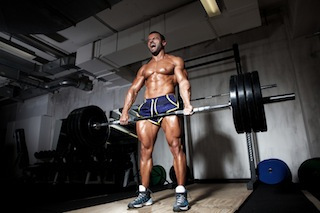 For today’s edition of Dear Mark, I’m answering four questions from readers. The first one comes from Mike, a powerlifter who’s looking to drop carbs and eat healthier without sacrificing his performance. Can he do it? Find out below. Next, what does the fact that we store fat in almost unlimited quantities tell us about the role it plays in our health? After that, I discuss how someone might incorporate “forest bathing” principles in their home. Last, I explore the nutritional benefits of wild elk fat and include its basic nutritional profile.
For today’s edition of Dear Mark, I’m answering four questions from readers. The first one comes from Mike, a powerlifter who’s looking to drop carbs and eat healthier without sacrificing his performance. Can he do it? Find out below. Next, what does the fact that we store fat in almost unlimited quantities tell us about the role it plays in our health? After that, I discuss how someone might incorporate “forest bathing” principles in their home. Last, I explore the nutritional benefits of wild elk fat and include its basic nutritional profile.
Let’s go:
Hey Mark,
I have been following your website for awhile now and am trying to catch up with, in my opinion, priceless info on nutrition and healthy living. I haven’t noticed anything on optimum nutrition intake specifically for powerlifters. Everything on the web is high carb, high protein but I’m slowly trying to cut carbs and gluten and all that unhealthy garbage.
I would really really really appreciate an article or podcast or even a quick email regarding this topic. I know there is no one-all be-all plan when it comes to this sport, but a point in the right direction would really help. Brief background: I have been training specifically for powerlifting for the last 10 months. My current program is pretty basic: 4 weeks of volume @80% of my 1RM, deload, then 4 weeks of intensity leading to a 9th week of new PRs.
I really appreciate your time and what you do. And I’ll keep listening even if you don’t reply.
Best regards,
Mike
Thanks for the kind words, Mike. I appreciate them. The days of powerlifters relying on entire pizzas doused in olive oil with gummy bear milkshake chasers for their nutrition are waning, as far as I can tell. Things are getting a lot more technical and folks are learning they can optimize their performance with better, “cleaner,” dare I say more primal nutrition. A few different things to check out:
Carb backloading: John Kiefer proposed this concept in his book of the same name, and you’ll have to buy it to get the full story, but the gist is something like “eat low to zero carb throughout the day, then consume massive amounts of carbs immediately after strength training.” This takes advantage of a nifty physiological trick called non-insulin dependent glucose uptake that occurs after a really intense session of training, which means your muscles can refill their glycogen stores without the usual spike in insulin and concomitant reduction in fat-burning. For more info, check out the podcast Kiefer did with Robb Wolf.
Cyclical low-carb/keto: This is what I usually recommend to people who want to eat mostly low-carb and maintain high performance in historically carb-intensive pursuits. It involves targeted, selective carb consumption rather than indiscriminate gorging. A “cycle,” if you will. You can cycle off low-carb in a couple different ways:
1. Focus your carbs around workouts, either 1-2 hours before or after. Go low-carb the rest of the time.
2. Do a carb refeed/cheat day once or twice a week. Strict low-carb at all other times. It probably works best to do your refeeds on or just before heavy training days.
Check out the KetoGains subreddit for a community of keto strength training enthusiasts.
You may also do fine on perpetual low carb, or even full-on ketogenic dieting, as this group of competitive gymnasts did (not powerlifters, sure, but they do strength train and managed to maintain or increase their lifts on a ketogenic diet). Just try it. Give yourself three to four weeks to acclimate to the new level of carbohydrate. Obviously, you don’t want to shake things up too much if you’re approaching a competition, or anything that demands your best performance. If you find yourself lagging during workouts even after the period of adaptation, make small, incremental increases in carb intake (around +20 grams per increase) adjacent to your training until you find a level that allows you to train well.
Hi Mark,
I completed the PB Certification a few months back (which was brilliant programme, by the way) and have just been reviewing my notes. One thing that struck me that you may have pointed out but I don’t recall seeing, is does the fact that the body can store only fairly limited amounts of carbohydrate and protein, yet almost unlimited fat give a good indication of the respective levels of each it expects to receive?
I see this rather like looking in someone refrigerator and seeing 3 different size containers; you could guess that the biggest one is for foods they eat the most of and the smallest the eat the least of.
Sorry if you have already made this point, but interested to hear your thoughts!
Thanks,
Tim
Good eye, Tim. That’s a very nice way to frame things. I sort of got into the subject in post from several years ago: The Metabolic Paradigm Shift, or Why Fat is the Preferred Fuel for Human Metabolism.
I’d go a step further, though. The fact that the body sees fit to store energy as fat indicates its safety. Fat isn’t toxic. It’s a reliable fuel source. It’s “healthy.” I mean, I just can’t imagine a scenario in which an animal — or all animals, really, who store excess energy as fat — evolves over millions of years to rely on a fundamentally flawed, toxic, “artery-clogging,” inherently dangerous source of energy. It wouldn’t make sense.
Any diet or way of living that restricts, inhibits, or perturbs our ability to utilize that stored energy is unhealthy. If we can’t access the fat locked in our cells, or our mitochondria aren’t equipped to burn it once freed, or we eat too much fat (or food in general) for our bodies to handle on a consistent basis, fat becomes”bad.” But fat isn’t inherently bad. If it were, we wouldn’t store it so readily and easily.
Hi Mark,
Greatly enjoyed your article on “Forest Bathing”. Was wondering if you had any thoughts or suggestions as to which plants/trees might be most beneficial or give off the most phytoncides? I want to put some in my house so I can be around them more often.
Thank you very much.
Love the site and the podcast.
Tony
While most of the best lab research has focused on the trees that populate the forests where the bathing occurs, like Japanese cedar and the hiba tree (a conifer), the specific species don’t seem to be very important. Forest bathing lowers stress, reduces hypertension, improves immune function, and lowers blood sugar whether the forest is cedar, hiba, oak, or beech. Studies using cypress oil, cedar wood chips, cedar interior walls (many Japanese homes are built out of cedar) all found similar effects. I’d imagine it would work equally well in the deciduous rainforests of the Pacific Northwest, the towering redwoods of California, Greece’s olive groves, Washington’s apple orchards, the Amazonian jungle. The important factor is the smell and the presence of greenery (or, probably, other growing things).
Although there’s very little research into optimal phytoncide-emitting houseplants, this paper (PDF) found that geraniums, chrystanthemums, cyperus, and begonias were all potent phytoncide sources. You could also look at the most effective aromatherapy scents for stress relief and buy some of the source plants. Some ideas:
Lavender and rosemary aroma can reduce cortisol and improve free radical scavenging.
A combination of lavender, rosemary, clary sage, and peppermint aromas reduced perceived stress in university students.
As a general rule, any houseplant whose odor is detectable will help. If you can smell it, you’re exposing yourself to plant-borne volatile organic compounds and there’s probably “good stuff” going on. Aim for plants whose smells you enjoy and you’ll probably benefit greatly.
Also, you know, a bag of cedar mulch from the hardware store might be worth a shot, too.
Lemme know how it goes, Tony!
Hi Mark,
In the spirit of fat, I collect all the fat trimmings from the elk my family kills every year then render it into elk cooking fat. Obviously these wild beasts are not anywhere near grains in the high country of Montana, but I was just curious as to how this fat compares to beef tallow, butter, lard, or other fats?
Nicely done! I envy anyone with ample elk tallow at his or her disposal. “In the spirit of fat” indeed. You’ve got a treat on your hands, as this profile of wild elk fat (among others) explains:
It’s primarily saturated and monounsaturated fat, similar overall to grass-fed beef. Low PUFA content.
Of the PUFA that’s present, a good amount is omega-3. Compared to even pasture-raised beef fat, elk tallow contains significantly more omega-3 fats.
It’s probably great for cooking. If it’s anything like the fat from sheep given free access to wild forage, elk fat is loaded with phytochemicals that protect the fatty acids from oxidative damage during the cooking process.
The only downside — and I use that term with many caveats because I don’t really consider it one — is that the fat might taste “funny” or “gamey.” That’s due to the diverse diet of wild game and reflects the variety of plant polyphenols (the aforementioned phytochemicals) present in the fat. When an animal eats wild plants rich in polyphenols (PDF), they show up in its fat, which is an acquired taste because we’re accustomed to animal fat from animals given monotonous, reliable diets.
Compared to lard, elk is lower in PUFA and MUFA, higher in SFA.
Compared to butter, elk is similar in PUFA, slightly higher in MUFA, slightly lower in SFA.
Compared to beef, elk is pretty similar overall. Higher SFA and lower MUFA, plus the extra omega-3s I mentioned above.
See if you can get a hold of the marrow bones and, if you’re adventurous, the brain. Nutrient greatness awaits inside:
Elk brain is about 9% DHA, more than some types of salmon. Don’t like fatty fish? Eat some elk brain instead.
Elk marrow is about 67% monounsaturated fat, the very same fatty acid found abundantly in olive oil. If someone’s giving you grief over consuming “arteryclogginganimalfat,” point to the MUFA content to shut them up.
Marrow is also rich in conjugated linoleic acid, the good trans-fat associated with lower inflammation and cancer inhibition in animal models.
Enjoy.
That’s it for today, everyone. Thanks for reading and be sure to add your comments and advice below.



February 15, 2015
Weekend Link Love – Edition 335
 PrimalCon Oxnard 2015 is gearing up to be a fantastic extended weekend of Primal play, learning, delicious food, and community. Grab your tickets soon!
PrimalCon Oxnard 2015 is gearing up to be a fantastic extended weekend of Primal play, learning, delicious food, and community. Grab your tickets soon!
Research of the Week
Exercise-induced hyponatremia isn’t caused by a deficiency of sodium-rich sports drinks, but by overhydration. Drink when thirsty, folks.
Plant-rich Paleo-type meals dramatically increase satiety.
Oranges contain far more flavonoids than orange juice, even when it’s fresh squeezed.
After receiving a fecal transplant from her obese daughter, a thin woman quickly became obese herself.
Humans’ taste for bitter plants is unique among the primates.
Researchers have detected a shift in the microbiome that precedes the onset of type 1 diabetes.
New Primal Blueprint Podcasts
Episode 54: Dr. Amy Myers, Author of The Autoimmune Solution: Host Brock Armstrong talks to Dr. Myers, a world-renowned expert on autoimmune disease. If you want to know why autoimmune disease happens and what you can do to prevent, mitigate, or stop it, this is the podcast for you.
Each week, select Mark’s Daily Apple blog posts are prepared as Primal Blueprint Podcasts. Need to catch up on reading, but don’t have the time? Prefer to listen to articles while on the go? Check out the new blog post podcasts below, and subscribe to the Primal Blueprint Podcast here so you never miss an episode.
Why You Should Have a Morning Routine
PrimalCon Oxnard 2015 — The One and Only!
What’s Messing With Your Appetite? Three Possibilities.
The Definitive Guide to Oils
Interesting Blog Posts
The federal government is finally about to withdraw their cholesterol warnings.
The Inuit are onto something: caribou-skin clothing keeps you warmer than high-tech expedition gear.
Treadmill desks might improve memory, attentiveness, and concentration.
Media, Schmedia
A wildlife photographer snapped a shot of a 250 kilo drunken gorilla just before it punched his lights out.
I was disappointed to hear that I just missed out on the frozen raccoon meat for sale at an LA Chinese supermarket.
It’s great to see the myth unraveling.
Everything Else
A company has created artificial sunlight that tricks the camera, your eyes, and your brain.
Tech’s changing us, but perhaps not necessarily for the worse.
Darwin’s daughters doodled. His sons did, too, but that messed up the neat alliteration I had going there.
How to walk without muscles (at least, if you’re a robot, and in a straight line).
A physician’s advice to patients interested in better deaths.
This more-than-43000 year-old Neanderthal flute (the world’s oldest known instrument) still sounds beautiful when played.
Now, listen to the Aztec death whistle. Sorry for the nightmares.
This is the next logical step for the standup workstation user.
Your dog really does know when you’re sad (or happy).
Recipe Corner
Normally, I cook my kale. But this kale fennel salad with lemon basil pesto vinaigrette really works, especially if you let the kale sit for awhile after massaging in the dressing.
An oldie, but a goodie: Brussels sprouts chips.
Time Capsule
One year ago (Feb 16 – Feb 22)
How to Design a Successful Personal Retreat – Personal retreats are important to get right. Here’s how to do it.
We Don’t Know What Constitutes a True Paleo Diet – And that’s totally okay.
Comment of the Week
Normally I don’t disagree with you too much, and in theory it’s sound advice, but honestly, option B sounds like hell on Earth….. unless you know of a well payin job that allows you to start at noon.
Own Marks Daily Apple maybe and live on Malibu Beach!
– It’s worked well for me!



February 14, 2015
Rogan Josh Lamb Stew
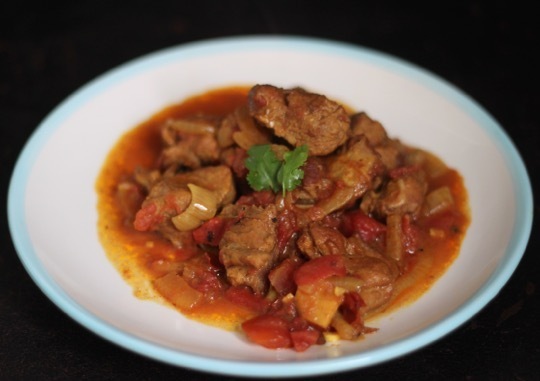 Rogan Josh is lamb stew with an unusual but memorable name. It’s a meal that fills your house with the comforting aroma of spices and slow cooked meat. Luckily, in this quick and easy (and dairy-free) version of Rogan Josh, “slow” only means an hour, so you won’t be tortured by the mouth-watering aroma for long.
Rogan Josh is lamb stew with an unusual but memorable name. It’s a meal that fills your house with the comforting aroma of spices and slow cooked meat. Luckily, in this quick and easy (and dairy-free) version of Rogan Josh, “slow” only means an hour, so you won’t be tortured by the mouth-watering aroma for long.
Rogan Josh is a popular Kashmiri dish traditionally made with lamb, yogurt, loads of hot Kashmiri chiles and other spices. This simplified version uses fire-roasted tomatoes and curry powder for heat and flavor. Creamy coconut milk easily takes the place of yogurt, coating the tender lamb in a rich, creamy sauce.
Lamb often shows up in slow-cooked, spice-heavy recipes like this, and for good reason; lamb’s mild but slightly gamey, grassy flavor pairs really well with intense spices.
Plus, slow-cooking lamb in sauce practically guarantees the meat will be tender. A dish like this version of Rogan Josh shows how easy it is to make a delicious meal out of lamb, even on a busy weeknight. Lamb is an excellent source of all eight essential amino acids as well as vitamins and minerals. It’s also one of the richest sources of conjugated linoleic acid (CLA). So, getting lamb on the table regularly is definitely a good thing.
Servings: 4 to 6
Time in the Kitchen: 35 minutes, plus 1 hour to simmer
Ingredients:
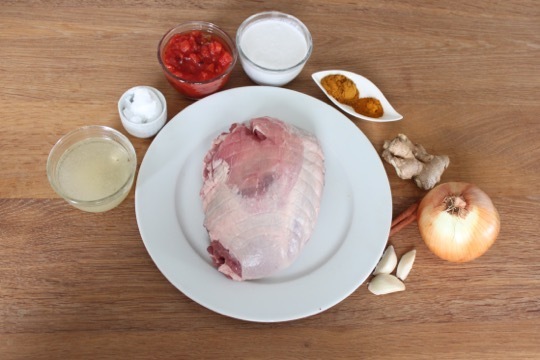
¼ cup coconut oil (120 ml)
2 pounds boneless lamb shoulder, cut into 1-inch pieces, seasoned generously with salt (900 g)
1 onion, thinly sliced
2-inch piece of ginger, thinly sliced (5 cm)
3 garlic cloves, finely chopped
1 tablespoon curry powder (15 ml)
1/2 teaspoon turmeric (2.5 ml)
1 cinnamon stick
1 14-ounce can fire-roasted tomatoes, or regular diced tomatoes (400 g)
1 cup coconut milk (240 ml)
1 cup beef stock or water (240 ml)
Instructions:
Heat coconut oil in a large, heavy casserole or pot (cast iron works well). Add the lamb, cooking in small batches so the meat isn’t crowded, until each piece is browned. Remove the meat from the pot and set aside.
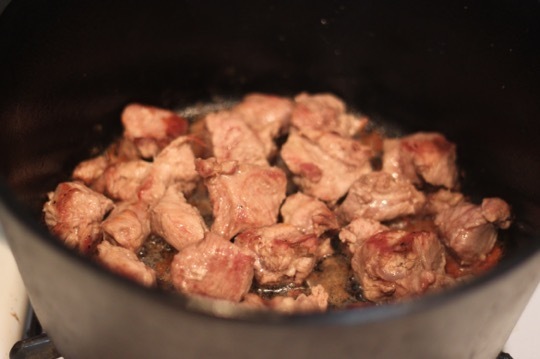
To the same pot, add onion and cook until lightly browned. Add ginger, garlic, curry powder and turmeric. Saute for 2 to 3 minutes, then add the cinnamon stick, tomatoes, coconut milk, and water/stock. Add the lamb back to the pot as well.
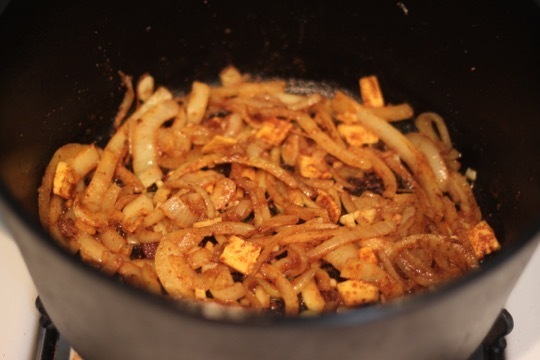
Bring to a boil then turn the heat down to a simmer.
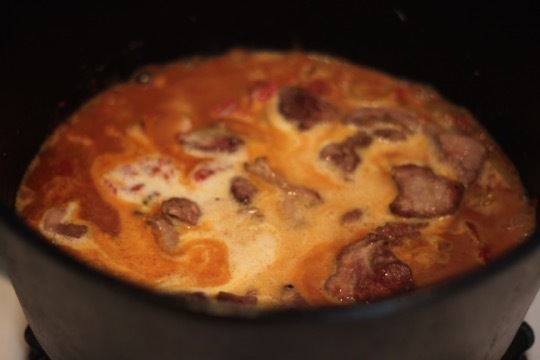
Simmer over low heat, partially covered, until lamb is tender, about 1 hour.

Not Sure What to Eat? Get the Primal Blueprint Meal Plan for Shopping Lists and Recipes Delivered Directly to Your Inbox Each Week


February 13, 2015
Being Primal: The Sustainable Change I’ve Always Wanted
It’s Friday, everyone! And that means another Primal Blueprint Real Life Story from a Mark’s Daily Apple reader. If you have your own success story and would like to share it with me and the Mark’s Daily Apple community please contact me here. I’ll continue to publish these each Friday as long as they keep coming in. Thank you for reading!
 Note: I wrote most of this during the challenge last year, but stopped short of sending it in, thinking “I’m not done yet.” This last year has taught me there is no finish line, just continual betterment and progress for the life you want to live.
Note: I wrote most of this during the challenge last year, but stopped short of sending it in, thinking “I’m not done yet.” This last year has taught me there is no finish line, just continual betterment and progress for the life you want to live.
My primal journey started in December of 2011, when at 22 I was face to face with my unavoidable future. I was 241 pounds, 5’7”, had a terrible relationship with food, and had been overweight my entire life. Type 2 diabetes also runs in my family. I remember the moment distinctly: I was on a mini family vacation, at our hotel, and I watched my dad inject insulin into his leg. I was stunned. He had been diagnosed with the disease when I was in my teens, but up until that point had only needed pills. I was scared. For my dad, yes, but also for myself, because I knew that if I didn’t change something, then that would be me. That was my future.
I’ve struggled with weight my entire life. As early as grade school I was teased about my weight. I distinctly remember “health day” in the 5th grade when I weighed in at 100 pounds. Boy, did the ugly comments commence once that got out among the class. So began my very negative self body-image and my relationship with food. Despite being fairly active by playing volleyball and softball, playing outside on our farm, and chasing our cats around with my mom’s camera, I stayed slightly overweight. Every year at my physical my pediatrician would show my mom and me that little health chart that tells you what you should weigh, and I was always above that line. My mom and I tried to lose weight together, but I could never stick to any kind of “diet” or plan. I was a kid, and I wanted to be like everyone else. I didn’t want to be on a diet when I was in middle school. What kid does? It was just another way for me to be different, and another source of ridicule on top of the teasing about my weight.
So despite family efforts to lose weight and become “healthy” via conventional wisdom (I had a huge disdain for low fat ranch), my weight kept going up. I probably gained ten to fifteen pounds every year of high school. By the time I was a senior, I think I was around 185. I remember being so frustrated because I played volleyball, did track and field, and played softball. I was an active kid, and I was extremely strong. But I was overweight and so self-conscious about my body that I developed an emotional eating habit. Food was always the answer. Sad? Eat. Happy? Eat. Angry? You guessed it—eat. Then I would hate myself for eating junk food, and it would start all over again.
But I managed to keep all of that frustration, anger, and sadness to myself for most of my life. I internalized the constant teasing and comments about how I was fat. I shrugged it off and looked fine, and happy, to the rest of the world. And for the most part, I was. I had amazing friends in high school, I was passionate about volleyball and played varsity since my sophomore year, and had a family that loved and supported me in every single way. But I would still occasionally cry myself to sleep because I was so unhappy with my body. If I could just be thin, everything would have been so much better—or at least that’s what I kept telling myself.
After high school, I was off to play collegiate volleyball. That sport has been (and still is) one of my biggest passions in life, and I was beyond excited to keep playing at a higher level. But along with the challenges of entering college and playing at a higher level, I was faced with the reality that my weight kept me from being the best athlete I could be. My coach and I had several discussions over my four years of playing about losing weight. It was always emotional for me because of my life-long struggle with my weight and my inability to lose any of it. We talked about diet, we talked about cardio—all the things conventional wisdom tells you to do to be healthy. Even though I loved lifting weights, I forced myself to do more cardio instead, spending an hour on the elliptical because I thought that would help me lose the weight.
Meanwhile, I had moved out of my parents’ house, was living on my own, hardly ever cooked, and began dealing with the stress of college. While my weight stayed constant during the season (it might have even gone down a bit because of our intense workouts and practices), in the off-season I would gain it all back, plus some. Talk about a huge spike in my body image issues—try being overweight when you’re surrounded by strong, fit athletes in a college setting. I was hyper-aware of my weight and my size, still had a terrible relationship with food, and had only conventional wisdom to help me. I failed, time and time again. And every time I couldn’t lose the weight, I felt more and more defeated, like I was not only letting myself down but letting my team and my coaches down as well. My senior year (2009-2010), I took training for volleyball extremely serious. It was my last year and I wanted to be in the best shape I possibly could. I followed a strict meal plan (read: calorie restriction), did my workouts religiously, and hardly ever hung out with friends because that would typically involve food and alcohol. My life was training for volleyball and losing two to three pounds per week.
For the first time, it worked. I spent most of the summer exhausted and I was extremely lonely, but I managed to go from 220 to 200 pounds by the time season started. Not an ideal weight, but definitely a better one. Despite losing the weight and feeling stronger than ever, I didn’t feel fit (although I did have some rockin’ biceps that year). I was always exhausted from our workouts. I felt like I had no energy. I couldn’t finish some of our conditioning, and I would break down crying in frustration and anger because I felt trapped in this weird limbo where on one side, I needed to lose weight, but on the other, I needed to be strong and fuel my body for these intense training sessions. I couldn’t find that balance, and I just remember being so angry with myself for not being able to do either one.
 After a very successful senior year (we won conference for the first time in ten years), I transitioned to coaching and started pursuing my master’s degree in English. Without the motivation to stay fit for volleyball, the weight piled back on. That’s when I found myself suddenly weighing 241 pounds in December of 2011, seeing my future with diabetes right before me if I didn’t change in a sustainable way.
After a very successful senior year (we won conference for the first time in ten years), I transitioned to coaching and started pursuing my master’s degree in English. Without the motivation to stay fit for volleyball, the weight piled back on. That’s when I found myself suddenly weighing 241 pounds in December of 2011, seeing my future with diabetes right before me if I didn’t change in a sustainable way.
So I did what any English nerd would do: I started reading. The first book I read that changed my perception of food was I’m Mad As Hell, and I’m Not Going to Eat It Anymore, by Christina Pirello. Although she promoted being vegetarian/vegan, this book opened my eyes to all the marketing that surrounds food and all the crap we are fed every day to buy food that could literally kill us. After this, I started cooking more whole foods, and continued to look for answers. (As a farm girl from Nebraska, being vegetarian was never going to take.)
That summer, I started doing Medifast and Take Shape for Life. A friend of mine asked if I would be interested, and she became my health coach as I took on the program. I read the books, and things started to click. Medifast limits your carbs to less than 100 grams a day with pre-packaged, dehydrated “meals,” and you get one “lean and green” meal—the program puts you in fat burning mode. That’s also about the same time I started reading Steve Kamb’s Nerd Fitness blog, which eventually led me to Mark’s Daily Apple. Many of the things I had read from Medifast seemed to line up (but not completely) with the things I was reading on NF and MDA.
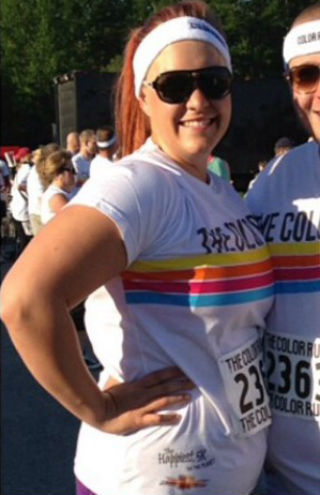 I felt amazing that summer. Since I was limiting carbs, I was burning fat. I suddenly had this ridiculous amount of energy, I was sleeping better at night, and the weight seemed to melt away. From June to September, I lost 35 pounds, while still managing to do all the things I loved. I felt my attachment to junk food and my emotional eating cycles diminishing, and found a new kind of attachment to taking short jogs, riding my bike, playing sand volleyball without gasping for air, and making amazing, delicious food. I also slowly started incorporating more Primal foods into my daily, home-cooked meal. Coconut oil, loads of veggies, and grass-fed butter became staples, and I took more time to find quality meats and fish like grass-fed beef and fresh caught salmon. I was starting to consider becoming a full-blown Primal Blueprinter, and knew that this could be the answer I’ve been looking for.
I felt amazing that summer. Since I was limiting carbs, I was burning fat. I suddenly had this ridiculous amount of energy, I was sleeping better at night, and the weight seemed to melt away. From June to September, I lost 35 pounds, while still managing to do all the things I loved. I felt my attachment to junk food and my emotional eating cycles diminishing, and found a new kind of attachment to taking short jogs, riding my bike, playing sand volleyball without gasping for air, and making amazing, delicious food. I also slowly started incorporating more Primal foods into my daily, home-cooked meal. Coconut oil, loads of veggies, and grass-fed butter became staples, and I took more time to find quality meats and fish like grass-fed beef and fresh caught salmon. I was starting to consider becoming a full-blown Primal Blueprinter, and knew that this could be the answer I’ve been looking for.
Once I returned to school, I started to get fed up with the Medifast meals. I craved real food. So I stopped eating the pre-packaged meals, and gained about 10 pounds back. I continued to read MDA religiously, but for whatever reason (perhaps teaching for the first time and dealing with the stress of grad school again), I didn’t commit 100% to the primal lifestyle.
 It wasn’t until the spring of 2013 that I finally felt like I could jump in, full steam ahead. I weighed in at 215 pounds, and decided to be primal for a month. Just one month. I shot for 90/10, and many times felt like I was doing better than that. I loved getting that high energy level back and sleeping better at night. The way I felt on the inside made being primal easy, and that month evolved into a lifestyle. I dropped 20 pounds without much effort that summer and maintained that weight easily while Primal.
It wasn’t until the spring of 2013 that I finally felt like I could jump in, full steam ahead. I weighed in at 215 pounds, and decided to be primal for a month. Just one month. I shot for 90/10, and many times felt like I was doing better than that. I loved getting that high energy level back and sleeping better at night. The way I felt on the inside made being primal easy, and that month evolved into a lifestyle. I dropped 20 pounds without much effort that summer and maintained that weight easily while Primal.
2014 started off well: I competed in my first triathlon, played in the adult national volleyball tournament in Phoenix, and really took advantage of a wonderful summer in Alaska. One year of being mostly Primal, though, wasn’t quite enough to make all the good habits. Slowly, old habits crept back into my life, and that number on the scale slowly crept back up. 90/10 turned into 80/20, and by the end of 2014 I think it was more like 50/50 (!!). If anything, 2014 showed me that I’m still a work in progress. I’m using the 21 Day Challenge to get back to basics: eating Primal 90% of the time or more, moving more on a daily basis, and getting out in nature as often as possible (yes, even during the winter…in Alaska).

Cross country skiing in Anchorage on Powerline Pass a couple weeks ago. This is where I play!
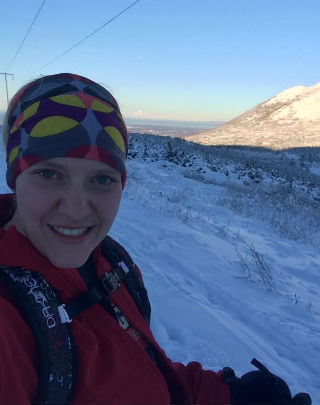 The good news is I know this works—I’ve done it before. I’m more focused and motivated than ever to make this stick, because I know this is the sustainable lifestyle I’ve been looking for since I was in my early 20s. I still have weight to lose, but that’s no longer as important as living a full, healthy life. Changing has been a long process. Sometimes I look back and wonder how much better I could have been in volleyball if only I had the PB sooner; but I know that it has taken all my experiences to get me where I am today, and I wouldn’t trade that for anything. I look at these photos and am humbled by how much this has changed me, inside and out. I’ll be graduating with my master’s degree this spring, and from there I’m planning to become Primal Blueprint Certified and become a health coach through the Institute for the Psychology of Eating. I feel nothing but compassion for those struggling with weight and body issues, and I know I’m meant to help people find their way to a happy, healthy life.
The good news is I know this works—I’ve done it before. I’m more focused and motivated than ever to make this stick, because I know this is the sustainable lifestyle I’ve been looking for since I was in my early 20s. I still have weight to lose, but that’s no longer as important as living a full, healthy life. Changing has been a long process. Sometimes I look back and wonder how much better I could have been in volleyball if only I had the PB sooner; but I know that it has taken all my experiences to get me where I am today, and I wouldn’t trade that for anything. I look at these photos and am humbled by how much this has changed me, inside and out. I’ll be graduating with my master’s degree this spring, and from there I’m planning to become Primal Blueprint Certified and become a health coach through the Institute for the Psychology of Eating. I feel nothing but compassion for those struggling with weight and body issues, and I know I’m meant to help people find their way to a happy, healthy life.
Mark, you have changed my life, possibly even saved it from a future of insulin medication, and my gratitude seems inadequate in exchange for that, but it is all I have. For anyone teetering on the edge of committing to this way of life, I urge you to stop being hesitant. Believe in the process, and stick to it. This lifestyle simply works. I will leave you all with my mantra, the one that kept me pushing forward on those days when I thought I would only fail again: Today you are closer to the person you were always meant to become. Thank you.
Stacie



February 12, 2015
Why You Should Have a Morning Routine
 Let’s consider a tale of two mornings.
Let’s consider a tale of two mornings.
The alarm blares. You have exactly seventy-five minutes to be out the door. After relinquishing fifteen of those to one “snooze” period and a few minutes on your phone (e.g. checking email, Facebook), you’re up. You put together coffee, feed the dog and let her outside, get the kids up, and help everyone grab something to eat. Within ten minutes, the clamor and chaos of the morning rush has taken over your thinking – in addition to the nagging reminder that you still have a few emails to send out before the first meeting at 9:00. So much for easing into the day… Even with the tag team approach made possible by a partner, it’s still a major production to hit the shower and get ready. There are bags to be packed, bills or homework to be gathered and final goodbyes to be said as everyone heads out the door. When you get to work, it’s a dash to fit in several tasks before 9:00. Somehow you keep waiting for a quiet moment to pull your thoughts together, to breathe and catch up with yourself, but the chance keeps further distancing itself like a teasing mirage in the desert. Later, you say. At lunch? After work? At night? Wait a second… I forgot my lunch again, didn’t I?
Now let’s look at a better way.
Second scenario… The alarm goes. This time you have two hours and 30 minutes. No snooze at this hour (especially if you want to stay in the good graces of your partner). Before anyone else is up, you grab your ready-made coffee (gotta love pre-programming options) and slip quietly into a remote corner of the house where everything you need is already there. Your phone is off limits except for music to help wake you up (consider it a sound cue to support your circadian wake cycle). After reading or journaling for a few minutes, you do some meditation perhaps and some light yoga or dynamic stretching and get ready for your a.m. workout. You’re enjoying the quiet around you and the focus on your movements. As you take a few minutes afterward, you write out your master list for the day. Following a hot shower, you’re calm and ready to organize the rest of the brood and face your day.
Moral of the story here: drive your day, or your day will drive you. Direct, or you’ll be put in a constant position to react.
While few if any of us get to choose everything that will happen in our days, the morning, in particular, has the power to determine who/what will be leading the way and how much we give to our own interests versus simply responding to others’ as the day progresses. As psychologist Roy F. Baumeister suggests in his well known book, Willpower: Rediscovering the Greatest Human Strength, our willpower is greatest in the morning – before we’ve had to fend off the slew of issues and choices that come our way. In other words, if you struggle to keep a given commitment to yourself/your well-being, you’ll likely be more successful making it part of your morning routine as opposed to holding off until later in the day.
From a physiological standpoint, too, the morning hours offer some extra benefits. Working out in a fasted state, research shows, offers better benefits for fat burning and insulin sensitivity. There’s also the advantage of the natural a.m. cortisol surge. That means extra energy – to offer the day’s workout or to tackle the most challenging tasks. How many of us postpone our exercise and certain responsibilities as long as we can – only to face them during our least energetic and driven hours of the day. By that point, it takes seemingly ten times the physical and mental wherewithal to make ourselves follow through (e.g. the thousand pound workout bag).
What’s more? You’ll be more invested in making healthier choices throughout the day if you’re already on a roll with an a.m. workout, meditation time and/or other positive behaviors. You’ve already got some skin in the game for living healthily that day. You also won’t be subject to that nagging sense of restlessness that can dog us all day. Our bodies are waiting to move and ready to stage an uprising at having to sit at a desk for eight hours first. Our minds likewise grumble at having to wait to get some personal time – to do something they enjoy as opposed to what they must do to collect a paycheck and go along to get along.
We tend to view our deferment as self-discipline. I’d call it self-deprivation.
Why should we put off what all that we want in our day? Why should we come last and not first? With this and other posts’ messages, I know I come off sometimes as promoting a selfish revolution, but the solid fact is, life works better for everyone when our needs are taken care of. We work harder. We play better with others. We eat less crap and can be healthier for it.
Developing a morning routine allows you to assert your own authority over the day. You take charge of your own work-life balance by, in effect, paying yourself first. Too many of us do it the other way around and are left with no time and energy to invest by the time we get to ourselves. As a result, too many people end up feeling at the mercy of their work and family demands. Responsibilities overwhelm, and they end up continually stuck.
When you lead with your own peace and well-being, however, much more is possible. Something essential changes when you begin directing your day rather than responding to it. However we choose to design our morning routine (as long as it truly feeds our needs – and more than just the mundane logistical check-offs), we on the day before anything/anyone else can. Our actions – and the pattern of action over time – can effect a powerful shift in our personal sense of self-efficacy and fulfillment.
What would it mean for the rest of life if you devoted a morning routine to your own interests? How would your relationships change if you began your day in ways that brought you joy and health? How would it impact your attitude at work if you started your job with a solid two hours of time invested in yourself?
Won over yet? Start brainstorming ideas.
Do something for your physical health.
First and foremost, exercise comes to mind here. That said, you can fold in other prospects, too. I always make sure I get outside in the morning. The light helps naturally wake me up (easier as we head toward the equinox now), but I also feel more invigorated getting in a morning walk or run if it’s outdoors. Also, keep in mind that you don’t have to move your entire workout time to the a.m. if that doesn’t appeal. Do a short stint or a leisurely stroll in the morning and save the rest for later. The idea here is to do something – some kind of movement (e.g. yoga, walking, weights) in addition to what else you feel would fuel your physical health that day.
Do something for your mental equilibrium.
Again, yoga might fit the bill for some people, as would time outdoors. I know people who have their coffee or breakfast outside, and just that simple action makes a huge difference in their day. Other people meditate for anywhere from 5-30 minutes. Other people read from certain books or journal to center themselves. Some people use it to indulge in self-care. Maybe it will something different every day. Only rule: it’s whatever works for you.
Do something toward your personal vision.
I think this is key because it speaks to the direct-react issue in a more expansive way than a single day’s schedule. How many of us have larger visions for our lives – things we’d like to try, careers we’d like to shift, hobbies we’d like to enjoy, areas/ideas we’d like to study BUT never do. Let’s face it: if you’re waiting until 9:30 each night or that magical “free” weekend, you can file it under “never gonna happen.” Be brazen and actually give a portion of the day’s best energy to your vision – whatever it is. Maybe it’s fitness. Maybe it’s a creative endeavor. Maybe it’s building a portfolio or networking to shift professional tracks. Maybe it’s learning a new language. Whatever – start your day with it. If you stick with it each morning, you’ll be amazed at the progress you can make.
Do something toward the day’s productivity.
As with any of the above ideas, this can mean different things to different people. I’d suggest making a master list for the day. That doesn’t mean dump fifty ideas on a piece of paper. Choose 5 at most, and make sure you do the most challenging or important among them in the morning. Beyond that, take on a chore that will make a difference in the next few days ahead. Batch cook a couple Primal dishes, or devote a condensed and efficient hour or two a week to financial planning/record keeping.
Finally, experiment.
A morning routine literally should be YOUR time. It should be at the whim of no one but you. Put police tape across the door if need be. So few of us are accustomed to giving ourselves this much – or this quality of – time. Putting yourself first in your day can feel disorienting. The fact is, you may not immediately know how to fill the space, or you may feel overwhelmed by how much you’d like to do. Just start and feel your way as you go. If you stick with your routine and use to genuinely nurture your interests, you’ll eventually wondered how you ever lived any other way. Use it for the good Primal life and personal vision you deserve.
Thanks for reading, everyone. Do you have a morning routine that takes you beyond the logistical race for the door? What has it done for you and your well-being? Share your thoughts and suggestions, and have a great end to the week.
Prefer listening to reading? Get an audio recording of this blog post, and subscribe to the Primal Blueprint Podcast on iTunes for instant access to all past, present and future episodes here.



February 11, 2015
PrimalCon Oxnard 2015 – The One and Only!
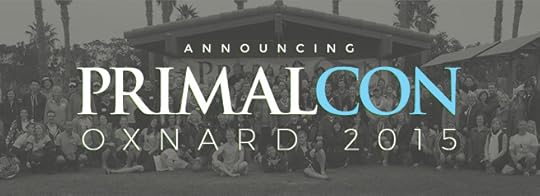
We started PrimalCon in the Southern California beach town of Oxnard back in 2010, visited an assortment of venues all over North America in the ensuing years, and now are nestling back in at our favorite spot of Oxnard to present one (and only one!) grand PrimalCon event in 2015. That’s right, we are going big next September and taking over the Embassy Suites Mandalay Beach Resort and Oxnard Beach Park for a four-day event from Wednesday Sept 23rd through Sunday September 27th, 2015. Yes we’ve expanded from our usual 3-day template to have both more presentation options and more relaxation!
While my team and I loved our sojourns to Lake Tahoe, Austin, New York, Tulum, Mexico, and of course returning to Oxnard annually to deliver a total of nine PrimalCon events over the past five years, we are eager to harness all of our resources to deliver a bigger, better, more diverse event next September in Oxnard. Here’s the thing––based on our aggregate ticket sales from the various cities over the past couple years, we expect this event to sell out promptly at 200 spots; ditto for rooms at the fabulous oceanfront Mandalay Beach Resort.
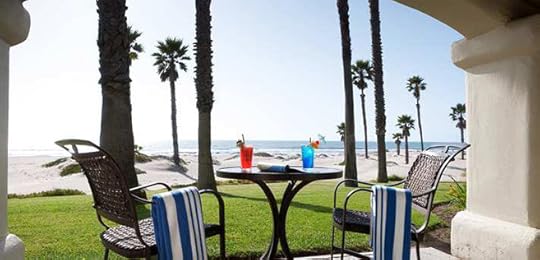
I realize we’re a long way off from late September 2015, but we’ve been inundated with eager PrimalCon enthusiasts wanting to make advance plans and secure a coveted spot at 2015 PrimalCon. So here’s your heads up: the shopping cart is now open and PrimalCon tickets are $1,695. The usual discounts apply: $100 for return attendees and $100 off for couples buying two tickets (just choose two tickets in the shopping cart). We have a payment plan available, so you can commit to the event with a partial deposit while respecting your monthly budget (call 888-774-6259 to discuss).
PrimalCon 2015 Agenda
With a larger group size than that of previous events, we’ll have more presenters and more choices throughout our daily agendas. Each day, we’ll offer lecture/seminar presentations in hotel breakout conference rooms, as well as all manner of outdoor activities at the adjacent beach park. We’ll utilize our popular free-choice format that allows you to rotate into a different presentation each hour and enjoy a delicious lunchtime feast at the beach. We’ll also convene in the grand ballroom for keynote presentations each evening before dinner. And when I say dinner, I really mean a lavish Primal feast so full of color, diversity and deliciousness, that it will knock your socks off from the first appetizer to the final morsel of dark chocolate as you linger and enjoy social time in the ballroom.
You can catch a glimpse of past PrimalCon feasts in this slideshow, but photos don’t really do justice to the food experience at PrimalCon. I’ve heard from many guests that our meals get them re-inspired and motivated about Primal cooking and eating, because of the amazing possibilities they see coming to life in front of them. Suffice to say you’ll have plenty of high quality food to eat, and meals are included in your registration fee. Every morning you can hit the resort’s custom-made omelet bar or grab a Primal Fuel smoothie at the beach park. At midday, we present a fabulous lunch buffet at the beach park, featuring grass-fed wagyu hamburgers from Thompson River Ranch with bacon, guacamole and NotSoFastFood Truck’s world-famous roasted banana chips, and of course the evening buffets centered on assorted meats and vegetables in ballroom. And if you’re not a dark chocolate aficionado already, you will become one when you sample the assortments from awesome sponsors like eatingEvolved and Santa Barbara Chocolate.
The agenda will feature all the classic Oxnard favorites, like the battle royale Survivor Team Challenge, the friendly-casual-low-key-fight-to-the-death , and of course the world-famous Primal Ocean Plunge/Jacuzzi Sprint (yes, we actually did get kicked out of the hotel Jacuzzi again in 2014, lest you think I’m embellishing my past storytellings…). We’ll have a deeper and more diverse presenter lineup than ever before, but you can count on many of our favorite PrimalCon veterans returning for more fun and games in 2015.
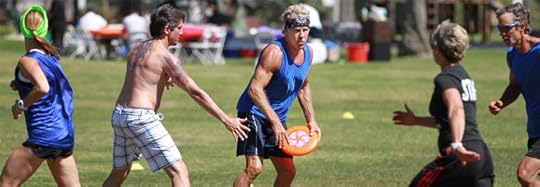
We’ll start each morning off with meditation/gratitude sessions with my wife Carrie, and energizing VitaMove exercise sessions with Angelo dela Cruz. We’ll be reminded how to really play (and push vehicles through the parking lot!) with the dynamic Darryl Edwards. We’ll learn how to add more movement and variation into daily life with Katy Bowman, how to run with correct technique and cultivate an ideal mindset for peak performance with Brad Kearns, and introduce safe techniques for weight training and bodyweight resistance exercise for all ability levels, and also learn about the dynamics of a winning coaching relationship, with Adam and Vanessa Lambert.
Dr. Cate Shanahan will be there to discuss ancestral living and answer your questions from a medical perspective, and Luke Shanahan will help make your dream of writing your life story (or any other story) a reality with his creative writing workshop. We’ll get into the emotional aspects of succeeding––or struggling––with body composition and other fitness and lifestyle goals with Dr. Alessandra Wall, a living, breathing impressive combo of CrossFit studette and cutting-edge psychotherapist. We’ll have an assortment of one-on-one opportunities with bodyworkers, therapists, and movement assessment experts to give you the personal attention you need to dial in optimal function and relieve pain and misalignment.
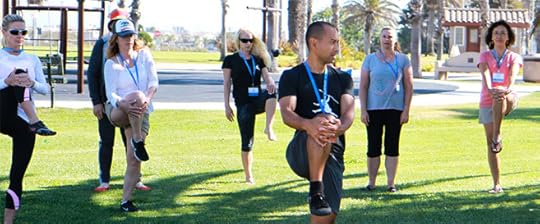
For the first time ever at PrimalCon, we are branching out beyond our wonderful primal/paleo/ancestral health family of expert presenters to bring in some exceptional keynote presenter talent on topics relating to general healthy living, peak performance, and personal growth. On that note, I’m excited to introduce New York Times bestselling author Ashley Merryman as a keynote speaker. Ashley and her co-author Po Bronson wrote NurtureShock: New Thinking About Children, and Top Dog: The Science of Winning and Losing. They are known for their fresh, provocative, and often counterintuitive look at our closely held conventional notions regarding parenting, competition, and winning and losing. Take a quick look at Top Dog and I guarantee you will be drawn in by the surprising insights that make you rethink conventional wisdom about competition.
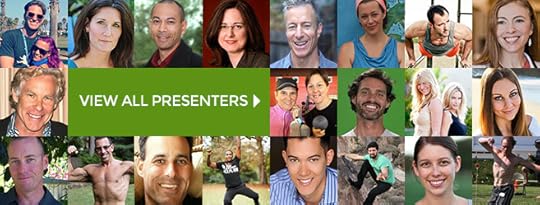
We’ll be updating the presenter list as we secure commitments over time (and of course cancellations might occur), but be assured that you will engage with some of the most interesting, knowledgeable, and fun-loving folks in the health and fitness industry. You can see our continually updated list of PrimalCon presenters at the PrimalCon page.
Making It Happen
Shortly before this post went live, we did the courtesy of informing our past PrimalCon participants that we were doing only one event, and that ticket sales were going live today. The response was excellent so we are already quite far down the road to our 200-ticket sellout point. Sorry, but we felt we owed the people who have supported PrimalCon from the very beginning a bit of a head start for 2015! However, if you’ve never been and want to go, I urge you to act right away as follows:
Purchase Your PrimalCon Ticket: Visit the PrimalCon page and pay in full now for best value or call 888-774-6259 or email to discuss a payment plan option if necessary.
Book Your Suite: Call the Mandalay Beach Resort (805-984-2500) or click on the PrimalCon custom booking page with awesome discount rates to reserve your suite for the September 23-27 event (you can extend a bit in either direction at the same discount rates if desired). The resort is totally sold out every September with weddings and people escaping the prolonged hot summer weather inland. We’ve already fought off some eager wedding parties to grab a sizeable room block, but it’s going extremely quickly.
Once we sell out, the shopping cart option will convert to a waiting list placement with a small deposit required. We fully expect to have some attrition as we have every year, and your chances are good that you will roll into an open spot if you pop for a ticket to the waiting list.
I hope to meet you in person in Oxnard next September! Of course, this is my company’s event so I’m gonna highly recommend it, but I’m not kidding when I say Carrie and I have as much fun, and get as much fulfillment, from being part of PrimalCon as any participant. It really is the highlight of the year for us! I’ve engaged with so many incredible people that any accolades I receive are dwarfed by what I get in return from the experience: our amazing presenters, our incredibly hard-working staff, the wonderful guests from around the globe, and of course countless Ultimate Frisbee victories for my team!
Well, time is a wastin’ right now, but if you are still not convinced that one weekend can change your life and strongly reaffirm your commitment to and passion for Primal living, why don’t you check out a couple of these highlight videos that give a great flavor for what PrimalCon is all about?
PrimalCon Oxnard highlights video
PrimalCon Tulum highlights video
PrimalCon Lake Tahoe highlights video
Lock In Your Spot and Purchase Your PrimalCon Ticket Today!
 P.S.
P.S.If you can’t make it to PrimalCon in Southern California this September, join me for three days of transformation on beautiful Manly Beach, Sydney, Australia this March 13-15. I’ll be joined by a world class group of primal and paleo peers.
You can find the full program details here. Final tickets were just released. Don’t miss out on the premier Southern Hemisphere ancestral health conference!
Prefer listening to reading? Get an audio recording of this blog post, and subscribe to the Primal Blueprint Podcast on iTunes for instant access to all past, present and future episodes here.


Contest: Social Media Love for $1100 in PrimalCon Goods!

To celebrate the announcement of PrimalCon Oxnard 2015, some of our favorite PrimalCon sponsors have offered up a handsome prize package to celebrate! This contest is SIMPLE. EASY, I promise you… and one lucky winner will walk away with the whole bunch!
The Prizes:
The New Primal specializes in making the ultimate artisanal jerky: no nitrates, preservatives, or MSG. Just pure, delicious grass-fed beef, marinated and smoked to perfection and sweetened with a touch of pineapple juice and honey, and infused with hints of onion, pepper, and ginger. Is anyone’s mouth watering yet?
The lucky winner of today’s contest gets enough swag to outfit a whole camping crew with 4 The New Primal Sur-THRIVE-al Kits: 1 of package of each jerky flavor (5 total), a TNP branded carabiner, bottle opener, cutlery set, buttons, a water bottle, and some Flint/matches. Total Value: $300.
Winner or not, I suggest checking out The New Primal on YouTube to learn more and visit this link to find a location to pick some up for yourself!
BONUS: Use coupon code PrimalCon at checkout to get 20% off your order.
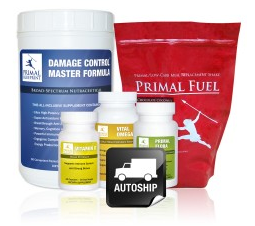 The Primal Blueprint Platinum Package – The Platinum Package is the ultimate in supplementation and is what thousands of Primal enthusiasts and I take daily. Includes: Damage Control Master Formula, Primal Fuel, Vital Omegas, Primal Flora, and Vitamin D booster. With a 30-day supply of a comprehensive, well-balanced multi-vitamin complex, omega-3 fish oils, healthy stress-busting nutrients, vitamin D and a delicious, coconut-based Primal meal replacement shake, the Platinum Package is a convenient and cost-effective way to live a healthy, Primal life in the modern world. Retail Value: $219.95.
The Primal Blueprint Platinum Package – The Platinum Package is the ultimate in supplementation and is what thousands of Primal enthusiasts and I take daily. Includes: Damage Control Master Formula, Primal Fuel, Vital Omegas, Primal Flora, and Vitamin D booster. With a 30-day supply of a comprehensive, well-balanced multi-vitamin complex, omega-3 fish oils, healthy stress-busting nutrients, vitamin D and a delicious, coconut-based Primal meal replacement shake, the Platinum Package is a convenient and cost-effective way to live a healthy, Primal life in the modern world. Retail Value: $219.95.
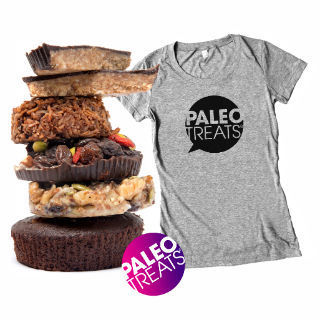 PaleoTreats® – Founded in 2009, PaleoTreats® is the original paleo dessert company. They are dedicated to staying totally paleo (that means no grains, no gluten and no dairy), and to making sure their treats taste as good or better than their conventional equivalents. Their best seller is the Mustang Bar which is comprised of just 11 simple ingredients: almond butter, coconut oil, walnuts, honey, almonds, raisins, pumpkin seeds, almond flour, coconut, vanilla, salt.
PaleoTreats® – Founded in 2009, PaleoTreats® is the original paleo dessert company. They are dedicated to staying totally paleo (that means no grains, no gluten and no dairy), and to making sure their treats taste as good or better than their conventional equivalents. Their best seller is the Mustang Bar which is comprised of just 11 simple ingredients: almond butter, coconut oil, walnuts, honey, almonds, raisins, pumpkin seeds, almond flour, coconut, vanilla, salt.
Winner gets 5 of each Treat plus a Paleo Treats® t-shirt and sticker. Retail value: $169.
BONUS: Use coupon code MDAHEALTH at PaleoTreats® to get 10% off your order through the end of the month.
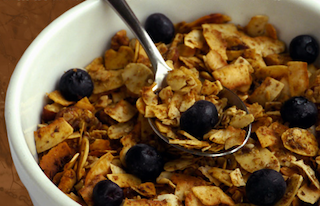 Primal Island – How about some toasted coconut grain-free granola? Primal Island does it right with no oats or other grains in sight, and with organic ingredients. We’re talking Organic Coconut Flakes, Sliced Almonds, Organic Honey, Organic Pecans, Organic Ground Flax Seeds, Pure Vanilla Extract, Organic Hazelnuts, Organic Coconut Oil, Organic Almond Extract, Organic Cinnamon, Organic Sesame Seeds, and Organic Nutmeg mixed together into granola goodness.
Primal Island – How about some toasted coconut grain-free granola? Primal Island does it right with no oats or other grains in sight, and with organic ingredients. We’re talking Organic Coconut Flakes, Sliced Almonds, Organic Honey, Organic Pecans, Organic Ground Flax Seeds, Pure Vanilla Extract, Organic Hazelnuts, Organic Coconut Oil, Organic Almond Extract, Organic Cinnamon, Organic Sesame Seeds, and Organic Nutmeg mixed together into granola goodness.
Winner gets 3 bags of paleo granola. Retail value: $30.
BONUS: Enter coupon code 4ORMORE during checkout to receive a 10% discount on orders of 4 or more bags of Primal Island Granola.
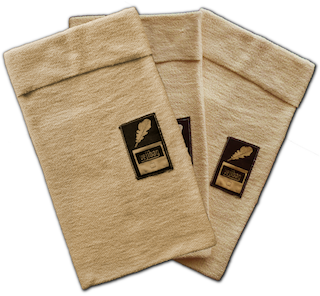 Vejibag - I’m sure we’d all love to be able to pluck fresh greens from our bountiful garden on demand, or walk to the local market for veggies every day. In reality, most people have to rush over to the market sometime after work, fight crowds, wrestle for the last bag of kale with an older woman with surprisingly strong arms, and buy enough to last the week – because there’s no way we’re gonna make it back anytime soon. That’s a fine solution when you’re buying meat, root vegetables, and other foods that last awhile, but spinach, baby greens, romaine, and other less hearty leafy green vegetables tend to start wilting immediately upon arrival in your fridge. That’s the worst. Nothing worse than some slimy lettuce. The Vejibag is almost magic. You make it a little damp, put just about any vegetable in there – leafy greens, salad makings, broccoli, cabbage, and the list goes on – and the bag will actually make the greens crisper than when they started. An essential tool for any salad fan out there.
Vejibag - I’m sure we’d all love to be able to pluck fresh greens from our bountiful garden on demand, or walk to the local market for veggies every day. In reality, most people have to rush over to the market sometime after work, fight crowds, wrestle for the last bag of kale with an older woman with surprisingly strong arms, and buy enough to last the week – because there’s no way we’re gonna make it back anytime soon. That’s a fine solution when you’re buying meat, root vegetables, and other foods that last awhile, but spinach, baby greens, romaine, and other less hearty leafy green vegetables tend to start wilting immediately upon arrival in your fridge. That’s the worst. Nothing worse than some slimy lettuce. The Vejibag is almost magic. You make it a little damp, put just about any vegetable in there – leafy greens, salad makings, broccoli, cabbage, and the list goes on – and the bag will actually make the greens crisper than when they started. An essential tool for any salad fan out there.
Winner gets one Vejibag Family Pack: 2 Vejibags, 4 VejiBIGS, and 2 VejiCHEFs. Retail Value: $159.60.
BONUS: Use MDACHALLENGE at checkout for 20% off your order. Valid 2/11-3/4/15.
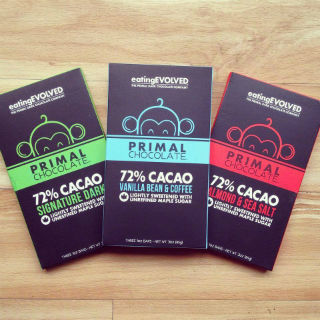 eatingEVOLVED’s mission is handcrafted dark chocolate done right. And boy do they get it right. The whole line is made with organic ingredients and Fair Trade Certified Cacao from the Dominican Republic. All of their products are free of gluten, dairy, soy, and cane sugar (they sweeten with organic maple sugar instead!) – a far cry from the commoditized, sugar-filled milk chocolate candies that line supermarket shelves.
eatingEVOLVED’s mission is handcrafted dark chocolate done right. And boy do they get it right. The whole line is made with organic ingredients and Fair Trade Certified Cacao from the Dominican Republic. All of their products are free of gluten, dairy, soy, and cane sugar (they sweeten with organic maple sugar instead!) – a far cry from the commoditized, sugar-filled milk chocolate candies that line supermarket shelves.
They carefully handcraft Primal Chocolate Bars, Coconut Butter Cups, and Hot Chocolate from their Long Island, NY home base.
They even made an appearance on Good Morning America, with yours truly, last year.
Winner receives a $150 gift certificate to eatingEVOLVED.com.
BONUS: Enter MDAPRIMALCHOC at checkout for 10% off your order.
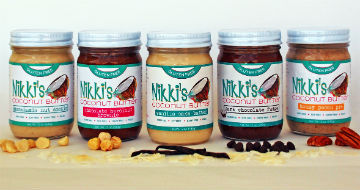 Nikki’s Coconut Butter - If you’ve been around the paleo block for awhile, you probably know all about Nikki’s. If not and you’re stressing about that beloved jar of peanut butter you just tossed, you’re in for an upgrade. Coconut butter is a spread made from the meat of the coconut much in the same way peanuts are used to make peanut butter. And just like peanut butter, it can be enjoyed with your favorite fruit, combined into smoothies, blended into coffee, or devoured by the spoonful straight from the jar!
Nikki’s Coconut Butter - If you’ve been around the paleo block for awhile, you probably know all about Nikki’s. If not and you’re stressing about that beloved jar of peanut butter you just tossed, you’re in for an upgrade. Coconut butter is a spread made from the meat of the coconut much in the same way peanuts are used to make peanut butter. And just like peanut butter, it can be enjoyed with your favorite fruit, combined into smoothies, blended into coffee, or devoured by the spoonful straight from the jar!
Organic coconuts have a great natural sweetness that makes eating Nikki’s coconut butters feel like eating dessert. They only use a tiny amount of organic honey or organic maple sugar/syrup in each jar to enhance this natural sweetness, so you can enjoy the amazing health benefits of coconut, without the guilt. Then, things like nuts, organic cacao powder, and other healthy ingredients are added to create the 5 flavors you see here.
Winner receives a jar of each flavor. Total Value: $104.99.
BONUS: Enter mda2015 at checkout for 10% off any order.
And all you have to do for a chance to win is…
The Contest:
Share the 2015 PrimalCon Oxnard announcement post on Facebook, Twitter, or Pinterest, using the widget below. Any one of those will put your name in the drawing BUT, if you do all three, your name is entered three times. Share every day and earn more chances to win!
The Deadline:
February 13th, 11:59 PM PST.
Who is Eligible:
Anyone in the world.
How A Winner Will Be Decided:
This nifty “Rafflecopter” widget will automatically randomly select a winner.



Mark Sisson's Blog
- Mark Sisson's profile
- 199 followers



